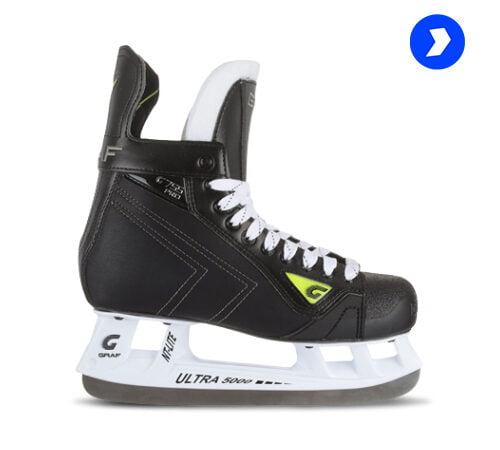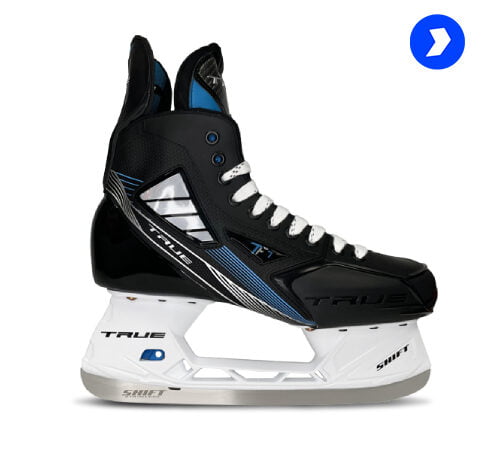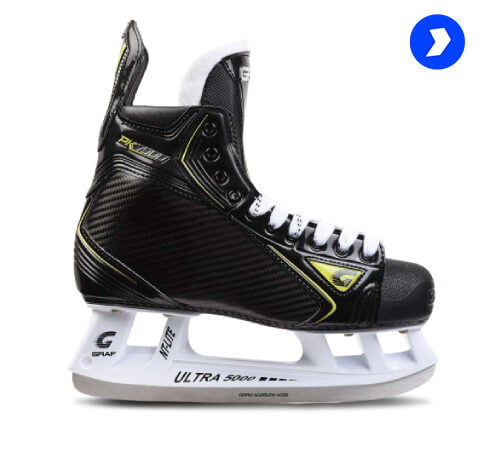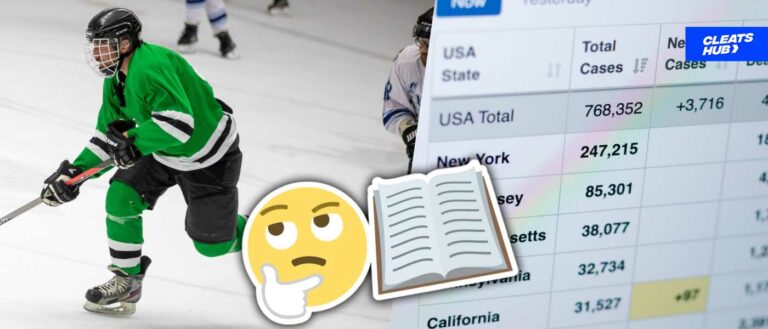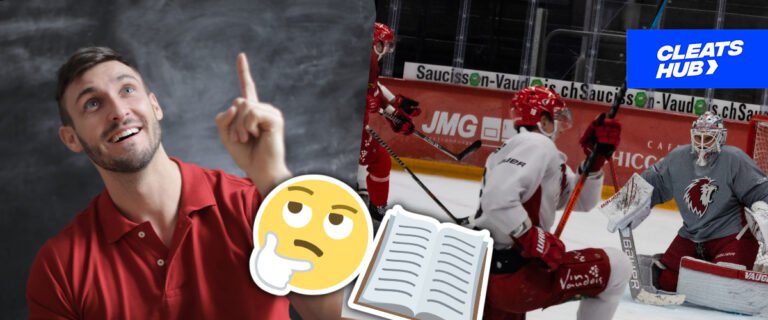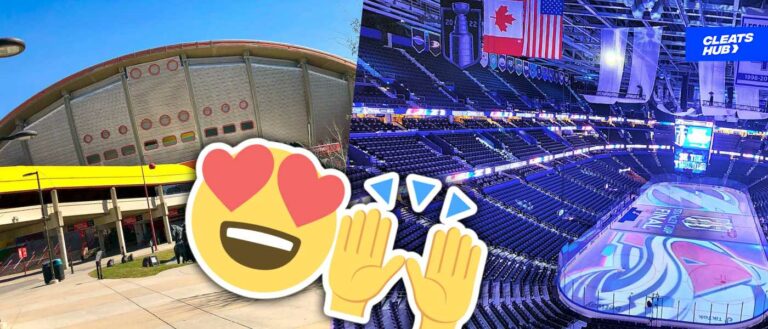NHL Timeout: How Many Timeouts Are In Ice Hockey?
If you have been to an ice hockey game, you might notice that there are moments when all the players on the ice will move to the bench of their team for a few seconds or minutes. This period is not usually after the end of a period but rather in between the games. What occurs at that time is known as a hockey timeout.
What Are Hockey Timeouts?
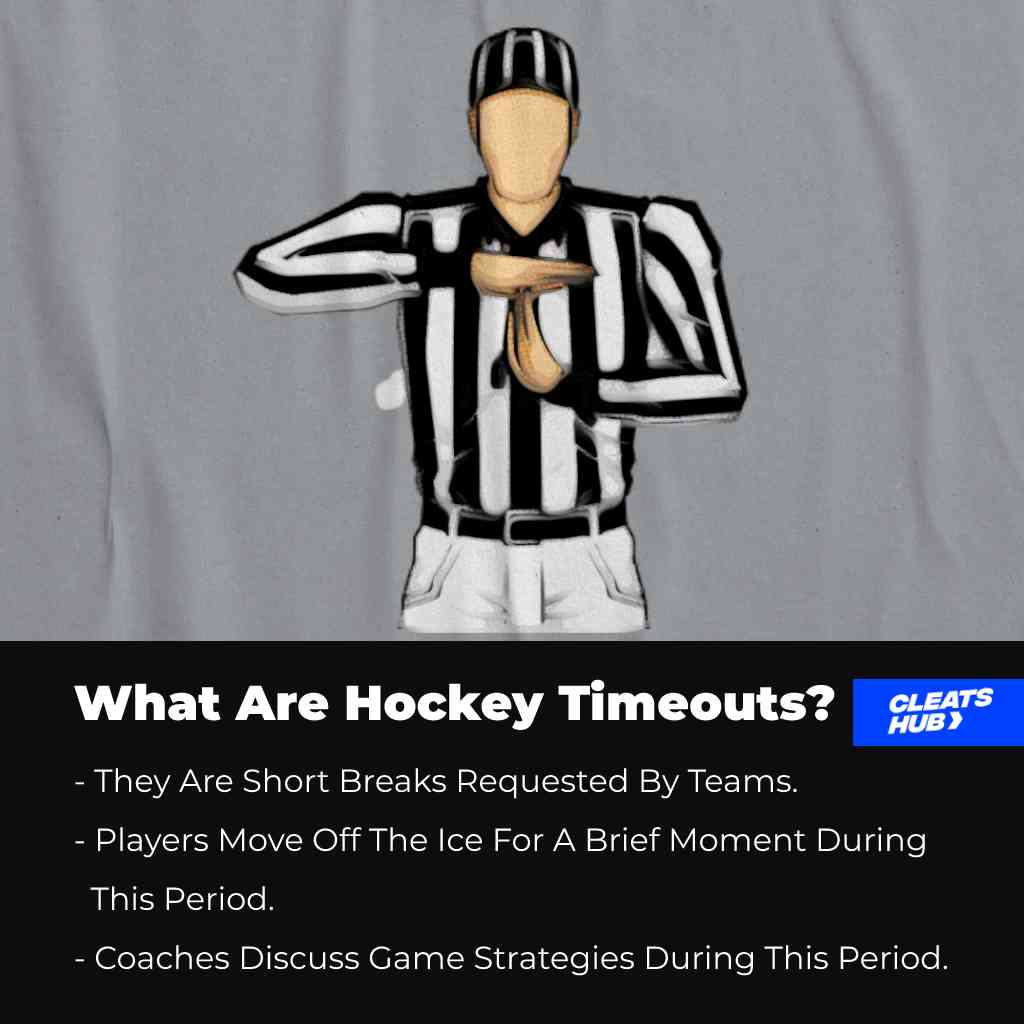
Hockey timeouts are short breaks requested by a team in which players move to the bench for a stipulated time before returning to resume the game.
For those familiar with live matches, there are times when a team’s coach or player might call a timeout, leading to all the players moving off the ice for a brief moment. This is done so they can meet with their coach and re-strategize their current gameplay.
Timeouts are a major part of many sports, including ice hockey. Even timeouts are not as common in ice hockey as in other sports leagues; they still sometimes hold deciding power over the outcome of a game.
How Long Are Hockey Timeouts Compared To Other Sports?

Timeouts in ice hockey are shorter and not as common as in other sports leagues. The reason for this is not known, but this makes timeouts valuable as they are not used until a time considered the “right moment”.
NHL Timeout
Each club in the NHL is only permitted one timeout per game, and timeouts last 30 seconds. This is why the NHL does not use it frequently. In the NHL, teams may request timeouts at any point during regulation time or, if the contest drags on, during the overtime period.
The call is only permitted once per team in every game. Thus, only two timeouts—one for each team—can be called during a game.
NCAA Hockey
The National Collegiate Athletic Association ice hockey league gives a one-minute timeout to each team in contrast to the thirty seconds of the NHL. In addition, each team gets an additional timeout whenever a game draws into overtime.
NBA Timeout
Different regulations apply in the NBA. Each team in the NBA is permitted up to seven timeout calls, which last 75 seconds. In the fourth period, teams are only allowed a total of four timeouts.
They can only utilize four timeouts in the fourth period, even though they didn’t use any throughout the previous three. As a game goes into overtime, teams are nevertheless given an additional two timeouts.
NFL Timeout
When it comes to the National Football League, timeouts last for 120 seconds (two minutes). In addition, each team gets three timeouts per half (the NFL is divided into two halves of 30 minutes each and four quarters of 15 minutes).
MLB Timeout
Timeouts in the MBL are infinite. Players can call for as many timeouts as possible; however, the umpire does not acknowledge every timeout. Timeouts in baseball are shorter, usually taking about 20–30 seconds.
| Sport League | Number of Timeouts (per game) | Length of Timeout |
| NHL | One per team | 30 seconds |
| NCAA | One per team plus an additional timeout during overtime | 60 seconds |
| NFL | 6 | 120 seconds |
| NBA | Seven plus two additional timeouts during overtime | 75 seconds |
| MLB | infinite | 20-30 seconds |
What Happens When Hockey Timeouts Are Called?

A timeout in ice hockey is signaled by the coach or the players. Before calling a timeout, the coach typically gives the players a signal.
Players from both teams leave the ice and take a seat on the bench for 30 seconds after a team requests a timeout. The coach formulates last-minute strategies with the players while they are on the bench that he believes will benefit them.
Players are not permitted to touch the puck or utilize it for practice while a timeout is in effect. Players are taken back onto the ice following a timeout, and play is then resumed.
Television Timeouts In Ice Hockey
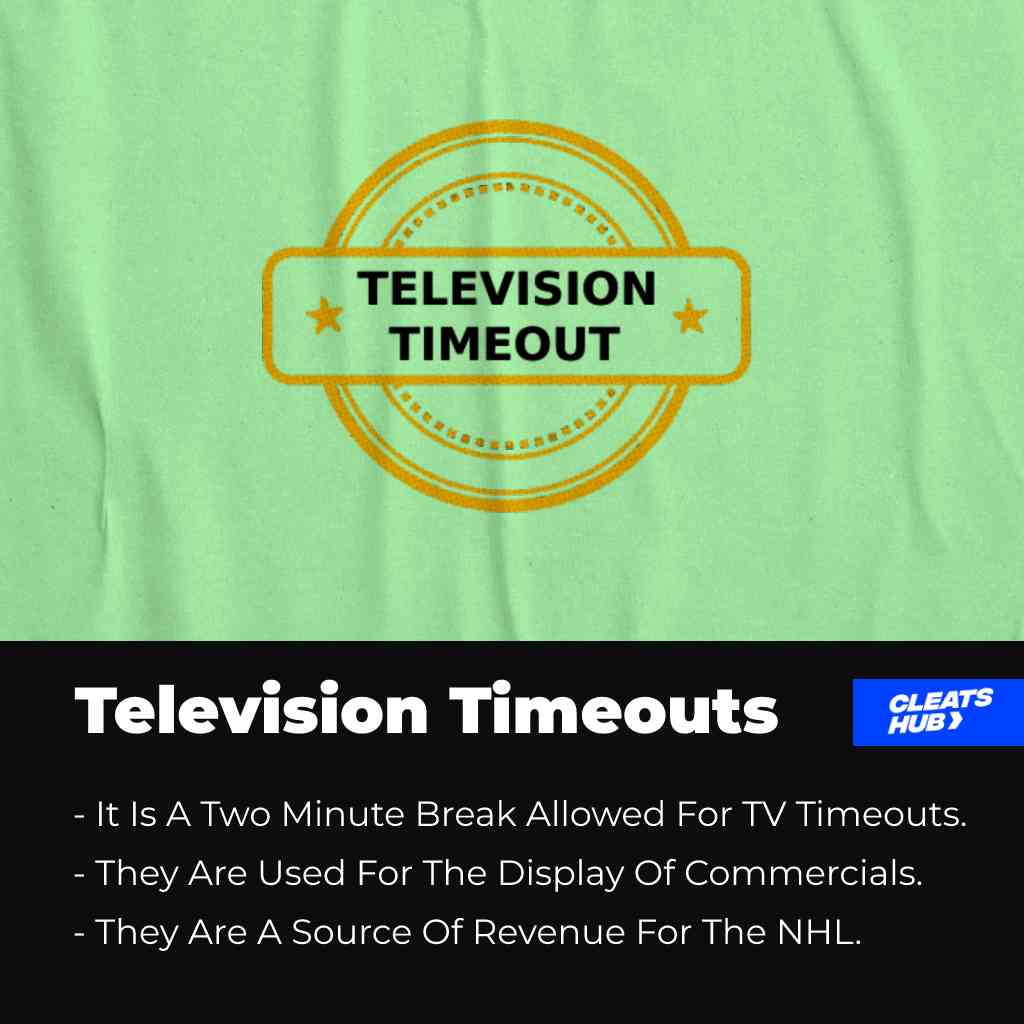
Timeouts on television are two-minute intervals set aside for commercials to air. Every period, the NHL airs advertising three times. This implies that each NHL game has nine television timeouts. One way the NHL makes money is through this.
After the minute marks of 16:00, 10:00, and 6:00, television breaks start. When a team is on the powerplay, a goal is scored, or icing is called, they are, however, delayed. The final 30 seconds of the first and second periods, as well as the final minute of the third period, are all TV timeout-free zones.
It is identical to a standard timeout if you’re wondering what happens during a television timeout. First, for the duration of the timeout—two minutes—all players are ordered back to the bench.
They can rest and discuss the next course of action with their coach during these two minutes. The arena ice crew enters the ice during this time to clean it by clearing away extra ice shavings and making sure the ice keeps its worth.
On the other hand, streaming viewers are forced to endure ad breaks.
When Can A Timeout Be Called In The NHL?
Timeouts cannot be called at any time in the NHL. There are moments when timeouts will not be given to a team. However, the general rule is that a timeout can only be called when there is a stoppage in play.
Timeouts can’t be called when the game is heated or in action. Other moments when timeouts can’t be called include:
- Timeouts can’t be called at the same time for the same stoppage in play. Therefore, if one team calls a timeout, the request of the other team will not be acknowledged until another stoppage is in play.
- Also, timeouts are not granted after the end of a television timeout. This is because two minutes have been given for players to rest and discuss with their coach.
- Timeouts are not given when a player is about to take a penalty shot
Reasons Why Timeouts Are Called In Ice Hockey
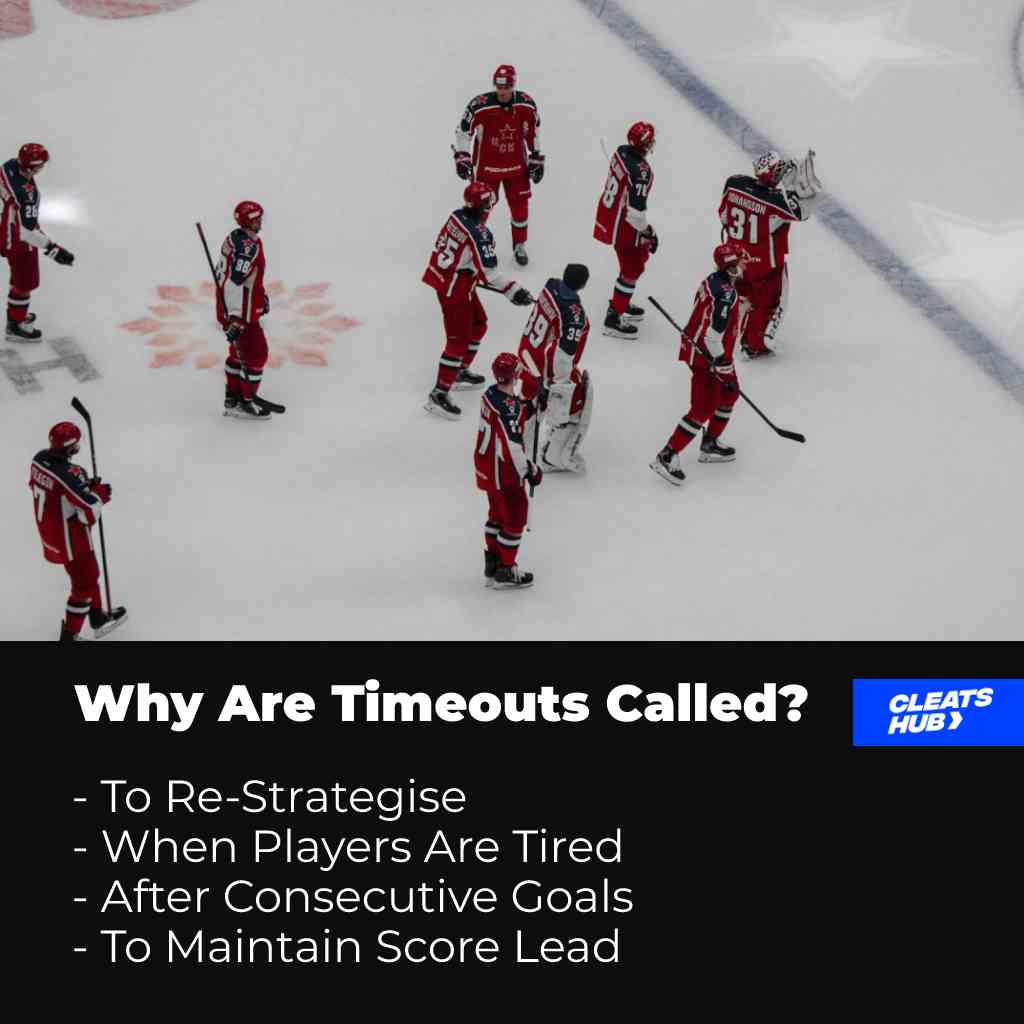
Since teams have only one timeout call, they need to ensure they use it when it matters the most. Here are some of the reasons why a timeout can be called by a team:
1. To Re-strategise
Depending on game observations made after a team has been playing for a while, the coach may opt to alter the attacking or defending tactics used by his players. In order to inform players of the new rules of play, a timeout may be called.
They may be able to exploit the opposition as a result.
2. When Players Are Tired
Ice hockey requires a lot of energy, so it is only natural to become weary. The drive to compete in the NHL is even greater. Shifts in ice hockey are used for this reason.
Players occasionally find themselves unable to switch lines (during icing or while the opposition team is on the powerplay), which forces them to stay on the ice for a longer period of time. A timeout can be called in this situation so that players can take advantage of the opportunity to recuperate before being called back up.
They are more energized to play the game this way.
3. After Consecutive Goals or A Big Flop
It is only natural that there are instances when players on a team perform a big flop that costs them goals. Let’s say a team gets two to three goals against them in about 3-5 minutes of playing; a coach can call a timeout so that his team can regroup.
This is because such instances can put a team in disarray and boost the opposing team’s momentum, giving the opposing team a higher chance of scoring more goals. Therefore, the best thing teams can do is call for a timeout and give players time to regroup, as well as point out their mistakes to the players.
4. To Maintain Score Lead
When an NHL team is in the lead and close to the end of the game by a near margin (about one goal), the coach might call for a timeout if he feels the opposing team is building momentum.
This allows the coach to discuss the best defensive game to ensure the game ends in their favor.
Conclusion
The IIHF and the NHL have slightly different timeout regulations. The most important one is that during each pause in play, both teams participating in the IIHF may request a timeout.
Speaking of regulations, the NHL used to have one that said that if a team requests a timeout to contest an offside or goal interference, their timeout will be forfeited if the challenge is found to be illegal.
They will get their timeout back if it is determined that the challenge is legitimate and that there was goaltender interference or an offside error. However due to the 2-minute minor penalty for an invalid challenge, this rule is no longer in effect.
Thanks for reading.
Psstt…. The Top Performing Cleats


